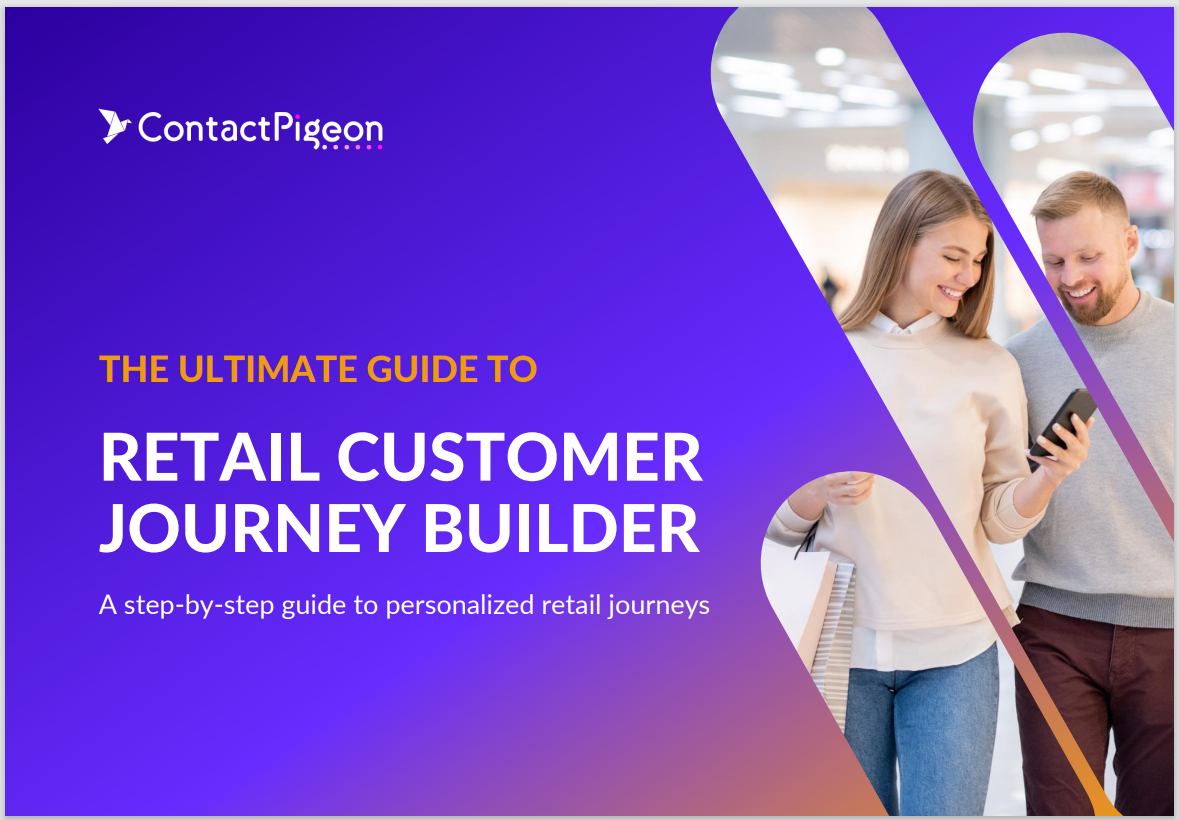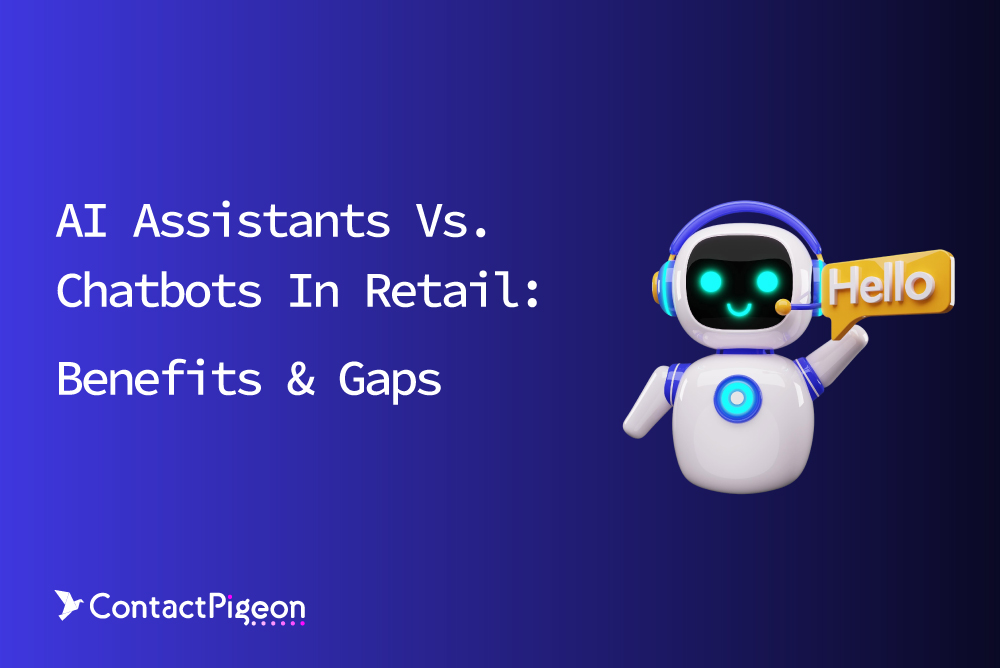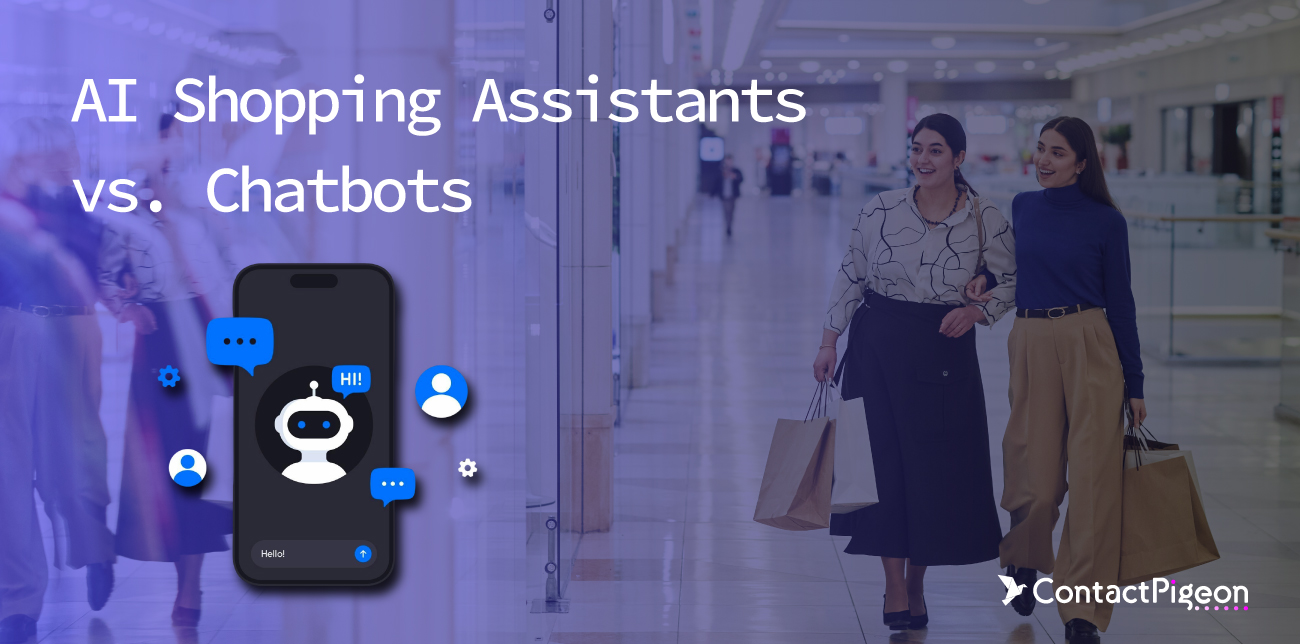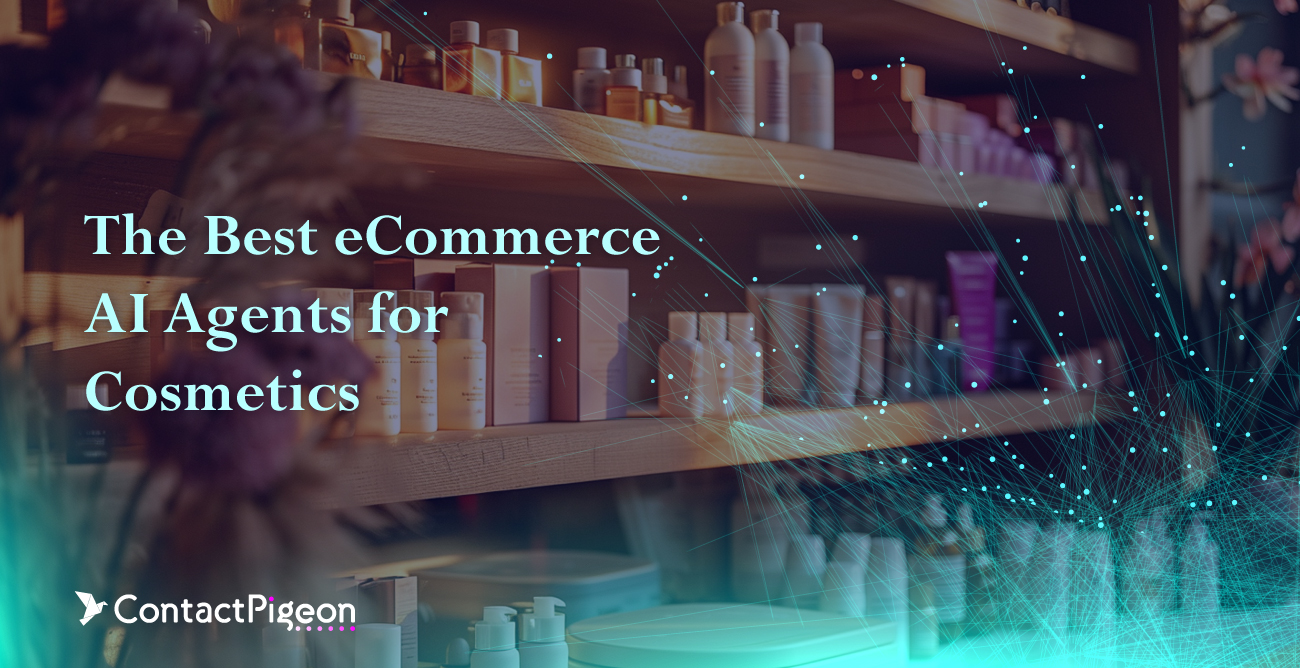With AI adoption accelerating and consumers demanding hyper-personalized, seamless omnichannel journeys, retail leaders face a strategic choice: understanding where AI shopping assistants and chatbots in retail each add value is no longer a tech question, but a business imperative. This article explains how to align these Retail Automation Tools with your retail objectives, rather than choosing one over the other. The real debate around AI vs. chatbots in retail is about orchestration, not exclusion.
No time to spare? Listen on the go!
- AI shopping assistants drive personalization & revenue — they excel at recommendations, guided shopping, upselling, and post-purchase engagement.
- Chatbots provide efficiency & scale — best for FAQs, returns, order tracking, and handling high-volume queries during peak periods.
- They serve different functions in the CX journey — assistants mimic in-store associates, while chatbots automate transactional tasks.
- Performance metrics differ — assistants are measured on AOV, conversion lift, and CLV; chatbots on resolution, containment, and deflection rates.
- The winning strategy is integration — combining both tools creates a seamless omnichannel system that balances personalization with operational efficiency.
What is an AI shopping assistant?
An AI shopping assistant is a context-aware, intelligent tool that guides customers from product discovery to purchase by delivering personalized recommendations, dynamic comparisons, and real-time support. Whether it’s suggesting the right sneaker size in fashion, curating bundles in electronics, or optimizing weekly grocery baskets, AI shopping assistants serve as digital associates designed to increase engagement, conversions, and customer lifetime value.
What is a chatbot?
Chatbots in retail are rule-based or AI-enhanced conversational interfaces designed primarily for FAQs, customer support, and operational tasks. They are efficient for handling order tracking, returns, or store hours, but are limited in delivering the deep personalization and product discovery that AI shopping assistants provide. When evaluating retail automation tools, chatbots in retail are best viewed as efficiency drivers rather than revenue engines.

Build smarter customer journeys and activate AI-driven personalization for repeat purchases.
AI assistants vs. chatbots in retail: Benefits & gaps

Both AI shopping assistants and chatbots in retail are reshaping retail CX, but they serve very different purposes. Below, we break down the key advantages and drawbacks of each to help retailers decide where each technology fits best.
AI shopping assistants in retail: Pros & cons
AI shopping assistants are transforming online shopping into a highly personalized, data-driven experience, but demand greater investment and technical integration.
Pros
- Personalized recommendations: Tailors suggestions using real-time and historical data.
- Boosts conversions: Engages users with relevant products, upsells, and reminders.
- Guided shopping experience: Mimics an in-store associate digitally.
- Post-purchase intelligence: Can prompt replenishment, reviews, or accessories.
Cons
- Requires data integration: Needs access to product catalogs, CRMs, or CDPs.
- More complex setup: Involves training, logic design, and backend alignment.
- Higher cost of ownership: Compared to basic bots, setup and maintenance may be higher.
Chatbots in retail: Pros & cons
Retail chatbots streamline customer support with speed and cost efficiency, though their scripted nature limits personalization and discovery.
Pros
- Quick to deploy: Set up in days with rule-based flows or FAQ templates.
- Cost-effective: Handles high-volume queries without human agents.
- Reliable for repetitive tasks: Great for order tracking, returns, and policy questions.
- Omnichannel support: Works across live chat, Messenger, WhatsApp, etc.
Cons
- Limited personalization: Doesn’t learn from customer behavior.
- Scripted interactions: Break down outside of predefined workflows.
- No product discovery capabilities: Can’t guide shoppers or suggest relevant alternatives.
Functional comparison: Which retail tasks do they do best
This table highlights how retail automation tools, specifically AI shopping assistants and chatbots, perform across common customer scenarios.
| Retail Task | AI Shopping Assistant ✅ | Chatbot 🤖 |
|---|---|---|
| Personalized Product Recommendations | ✓ Uses behavior, trends, context | ✖ Limited or rule-based |
| Product Discovery/Search Assistance | ✓ Smart filtering, semantic search | ✖ Keyword-based or generic |
| Upselling & Cross-Selling | ✓ Dynamic, AI-driven suggestions | ⚠ Manual rule setup required |
| Guided Checkout Support | ✓ End-to-end assistance through cart | ⚠ Often redirects to checkout page |
| Real-Time Inventory Awareness | ✓ Syncs with backend/catalog | ⚠ Possible but not standard |
| Order Status & Delivery Tracking | ⚠ Possible, but not core strength | ✓ Strong use case |
| Returns & Exchange Assistance | ⚠ Limited unless integrated with systems | ✓ Well-suited for routine queries |
| Customer Service (FAQs, Policy Info) | ✖ Not designed for static support | ✓ Ideal for FAQ and basic queries |
| Re-engagement (e.g., Cart Abandonment) | ✓ Context-aware nudges & follow-up | ⚠ Requires setup, less personalized |
| Gift Guide or Style Advisor | ✓ Understands preferences & context | ✖ Not capable of dynamic suggestions |
Retail scenarios: When to ΑΙ shopping assistants vs. bots
Not every customer interaction requires the same tool. Here’s a breakdown of common retail scenarios and which solution, AI shopping assistant or chatbot, delivers the most value in each case.
- Product discovery & guided navigation: Best handled by AI shopping assistants. They interpret customer intent, filter large catalogs, and guide shoppers toward the right product with contextual suggestions.
- Order status & tracking inquiries: Best handled by chatbots in retail. They provide quick, transactional answers and scale for repetitive tasks.
- Personalized recommendations: AI shopping assistants leverage behavioral signals to deliver highly relevant product suggestions.
- Abandoned cart recovery: AI shopping assistants personalize re-engagement with tailored incentives, boosting win-back rates. Read our blog article, Omnichannel Cart Abandonment Strategy, and decide on your next steps!
- Returns, exchanges, and policy questions: Chatbots in retail are most effective for standardized, policy-driven interactions.
- Post-purchase engagement & reordering: AI shopping assistants excel at replenishment prompts and loyalty-driven offers.
- Customer support during high-traffic events: Chatbots in retail absorb high query volumes, ensuring shoppers get timely responses.
Performance metrics retailers should track for AI shopping assistants & chatbots
For retail leaders comparing retail automation tools, the key is to view AI shopping assistants as revenue drivers and chatbots in retail as efficiency multipliers.
AI shopping assistant metrics
AI shopping assistants aren’t just digital helpers, they act as revenue engines, guiding customers toward higher-value purchases and stronger lifetime loyalty.
| Metric | What It Tells You |
|---|---|
| Conversion Rate | Measures how effectively the assistant turns browsing sessions into purchases—critical for evaluating revenue impact. |
| Average Order Value (AOV) | Tracks whether personalized recommendations and upselling increase the typical basket size. |
| Cart Recovery Rate | Shows how many abandoned carts are successfully converted into sales through tailored re-engagement. |
| Personalization Accuracy | Indicates how well the assistant matches recommendations to individual preferences and behaviors. |
| Session Duration | Longer sessions suggest higher engagement and successful guided navigation through the shopping journey. |
| Repeat Purchase Rate | Measures the assistant’s role in building loyalty by encouraging return purchases and replenishments. |
| Customer Lifetime Value (CLV) | Tracks the long-term financial impact of AI-driven personalization and engagement strategies. |
| Engagement Rate | Looks at how often shoppers interact with the assistant—chat frequency, clicks, and recommendation usage. |
| Upsell & Cross-Sell Revenue | Shows incremental revenue generated from AI-driven complementary or higher-value product suggestions. |
| Customer Satisfaction (CSAT/NPS) | Captures shopper sentiment to evaluate whether the assistant improves CX and overall brand perception. |
Chatbot metrics
Retail chatbots serve as frontline efficiency tools, streamlining support by resolving issues instantly and reducing reliance on human agents.
| Metric | What It Tells You |
|---|---|
| Resolution Rate | Shows the percentage of customer issues fully resolved by the chatbot—key for assessing effectiveness in reducing agent workload. |
| Containment Rate | Measures how often the chatbot handles inquiries without escalation to a human agent, indicating efficiency and automation success. |
| First Response Time | Tracks how quickly the chatbot responds to a customer query—crucial for meeting expectations of instant support in retail. |
| Average Handling Time | Shows the typical duration of chatbot-customer interactions, helping assess whether the bot resolves queries efficiently without friction. |
| Escalation Rate | Indicates the share of conversations handed over to human agents, revealing gaps in the chatbot’s capabilities. |
| Customer Satisfaction (CSAT) | Captures customer feedback on chatbot interactions, showing how well the bot supports CX and maintains brand reputation. |
| Net Promoter Score (NPS) | Evaluates whether chatbot experiences contribute positively to loyalty and the likelihood of customers recommending your brand. |
| Deflection Rate | Measures how many inquiries are redirected away from costlier support channels (like phone or live chat) thanks to chatbot automation. |
Chatbots are easy to launch with the right prep. Use our AI Chatbot Deployment Checklist to cover all the key considerations before going live.
Do AI shopping assistants require training, or can they work out of the box?
While some assistants offer plug-and-play setups, optimal performance comes from training the model on your product taxonomy, customer behavior data, and tone of voice. Most platforms provide onboarding or tools to fine-tune performance over time.
How do we measure the ROI of a shopping assistant compared to a chatbot?
Key ROI indicators include uplift in average order value (AOV), conversion rate improvement, and engagement-to-checkout completion. Unlike chatbots, which primarily support service KPIs, AI assistants should be evaluated like a sales channel.
Can a chatbot be upgraded into a shopping assistant later?
In some cases, yes, if the chatbot platform supports AI/NLP modules and product integrations. Many retailers instead layer an assistant alongside the chatbot, separating transactional queries from guided selling.
What are the risks of deploying an AI assistant without a proper data strategy?
Without accurate, structured data (e.g., clean product attributes, up-to-date inventory, and behavior signals), the assistant may give irrelevant or outdated suggestions, eroding trust and depressing conversion. A solid data foundation is critical.
What retailers should do next: From evaluation to execution
AI shopping assistants excel at driving conversion and personalization, while chatbots in retail deliver unmatched efficiency and support automation. When combined, they create a unified system that covers the entire customer journey. In 2025, shoppers demand instant, intelligent, and seamless experiences, meaning retailers can no longer afford fragmented or outdated CX strategies.
The mandate is clear: align both tools to their strengths, integrate them into a cohesive omnichannel approach, and move quickly from evaluation to execution. By strategically leveraging retail automation tools, retailers can transform the AI vs. chatbots in retail debate into a roadmap for growth.
Ready to align automation with your retail growth strategy? Book a free demo with ContactPigeon to see how AI shopping assistants and chatbots in retail can work together to boost conversions and customer satisfaction.



